The golden oyster mushroom craze unleashed an invasive species – and a worrying new study shows it’s
Kits that help people grow their own golden oyster mushrooms at home may be one reason this nonnative species is now spreading in the wild.
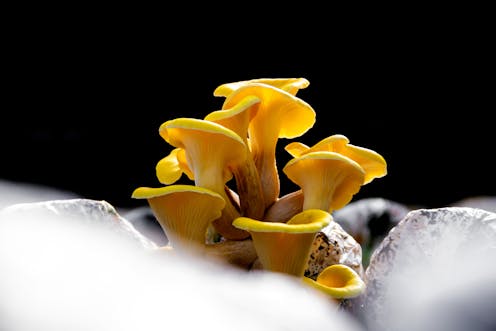
Golden oyster mushrooms, with their sunny yellow caps and nutty flavor, have become wildly popular for being healthy, delicious and easy to grow at home from mushroom kits.
But this food craze has also unleashed an invasive species into the wild, and new research shows it’s pushing out native fungi.
In a study we believe is the first of its kind, fellow mycologists and I demonstrate that an invasive fungus can cause environmental harm, just as invasive plants and animals can when they take over ecosystems.
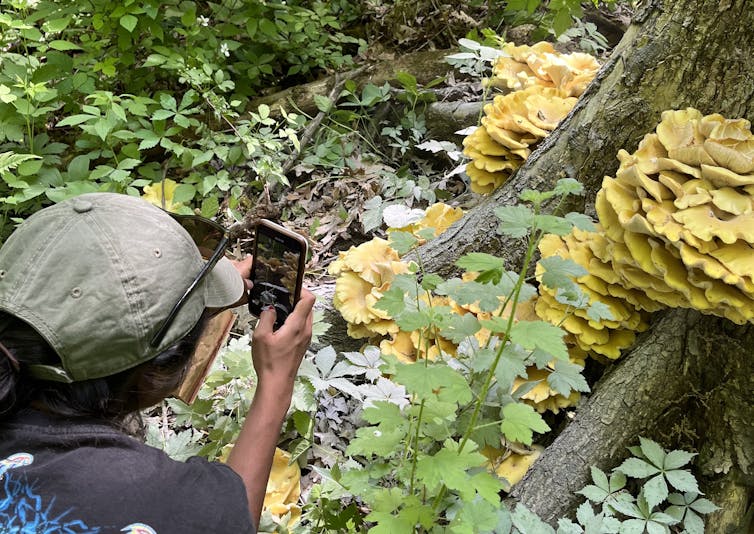
Native mushrooms and other fungi are important for the health of many ecosystems. They break down dead wood and other plant material, helping it decay. They cycle nutrients such as carbon and nitrogen from the dead tissues of plants and animals, turning it into usable forms that enter the soil, atmosphere or their own bodies. Fungi also play a role in managing climate change by sequestering carbon in soil and mediating carbon emissions from soil and wood.
Their symbiotic relationships with other organisms also help other organisms thrive. Mycorrhizal fungi on roots, for example, help plants absorb water and nutrients. And wood decay fungi help create wooded habitats for birds, mammals and plant seedlings.
However, we found that invasive golden oyster mushrooms, a wood decay fungus, can threaten forests’ fungal biodiversity and harm the health of ecosystems that are already vulnerable to climate change and habitat destruction.
The dark side of the mushroom trade
Golden oyster mushrooms, native to Asia, were brought to North America around the early 2000s. They’re part of an international mushroom culinary craze that has been feeding into one of the world’s leading drivers of biodiversity loss: invasive species.
As fungi are moved around the world in global trade, either intentionally as products, such as kits people buy for growing mushrooms at home, or unintentionally as microbial stowaways along with soil, plants, timber and even shipping pallets, they can establish themselves in new environments.
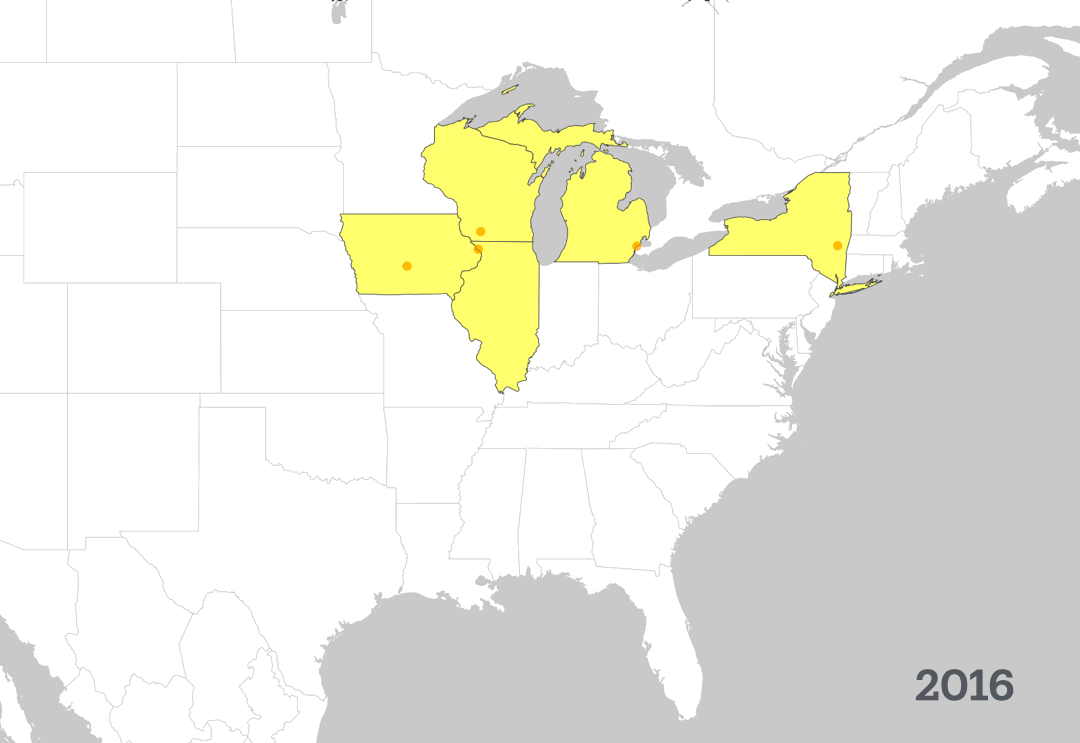
Many mushroom species have been cultivated in North America for decades without becoming invasive species threats. However, golden oyster mushrooms have been different.
No one knows exactly how golden oyster mushrooms escaped into the wild, whether from a grow kit, a commercial mushroom farm or outdoor logs inoculated with golden oysters – a home-cultivation technique where mushroom mycelium is placed into logs to colonize the wood and produce mushrooms.
As grow kits increased in popularity, many people began buying golden oyster kits and watching them blossom into beautiful yellow mushrooms in their backyards. Their spores or composted kits could have spread into nearby forests.
Evidence from a pioneering study by Andrea Reisdorf (née Bruce) suggests golden oyster mushrooms were introduced into the wild in multiple U.S. states around the early 2010s.
Species the golden oysters pushed out
In our study, designed by Michelle Jusino and Mark Banik, research scientists with the U.S. Forest Service, our team went into forests around Madison, Wisconsin, and drilled into dead trees to collect wood shavings containing the natural fungal community within each tree. Some of the trees had golden oyster mushrooms on them, and some did not.
We then extracted DNA to identify and compare which fungi, and how many fungi, were in trees that had been invaded by golden oyster mushrooms compared with those that had not been.
We were startled to find that trees with golden oyster mushrooms housed only half as many fungal species as trees without golden oyster mushrooms, sometimes even less. We also found that the composition of fungi in trees with golden oyster mushrooms was different from trees without golden oyster mushrooms.
For example, the gentle green “mossy maze polypore” and the “elm oyster” mushroom were pushed out of trees invaded by golden oyster mushrooms.
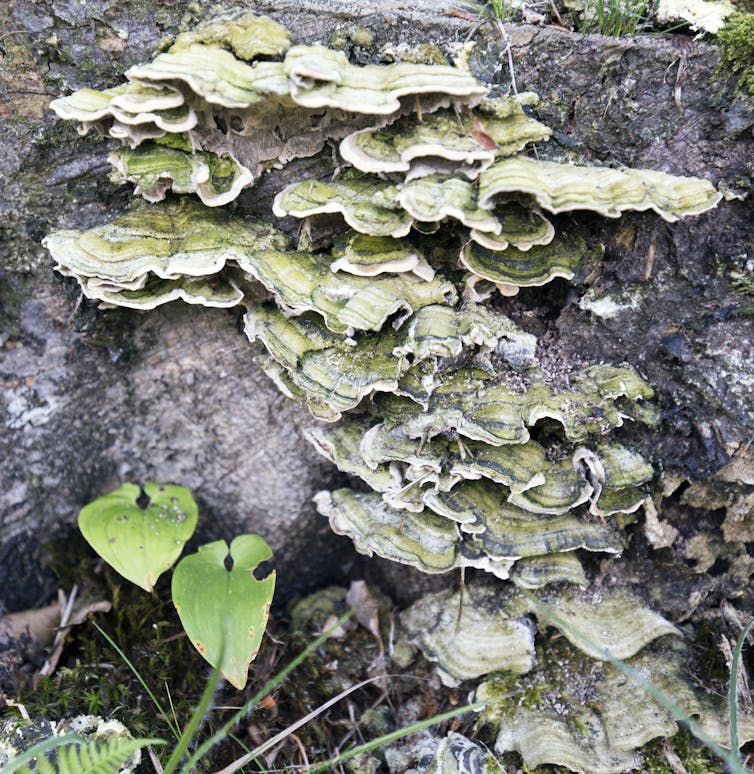
Another ousted fungus, Nemania serpens, is known for producing diverse arrays of chemicals that differ even between individuals of the same species. Fungi are sources of revolutionary medicines, including antibiotics like penicillin, cholesterol medication and organ transplant stabilizers. The value of undiscovered, potentially useful chemicals can be lost when invasive species push others out.
The invasive species problem includes fungi
Given what my colleagues and I discovered, we believe it is time to include invasive fungi in the global conversation about invasive species and examine their role as a cause of biodiversity loss.
That conversation includes the idea of fungal “endemism” – that each place has a native fungal community that can be thrown out of balance. Native fungal communities tend to be diverse, having evolved together over thousands of years to coexist. Our research shows how invasive species can change the makeup of fungal communities by outcompeting native species, thus changing the fungal processes that have shaped native ecosystems.
There are many other invasive fungi. For example, the deadly poisonous “death cap” Amanita phalloides and the “orange ping-pong bat” Favolaschia calocera are invasive in North America. The classic red and white “fly agaric” Amanita muscaria is native to North America but invasive elsewhere.
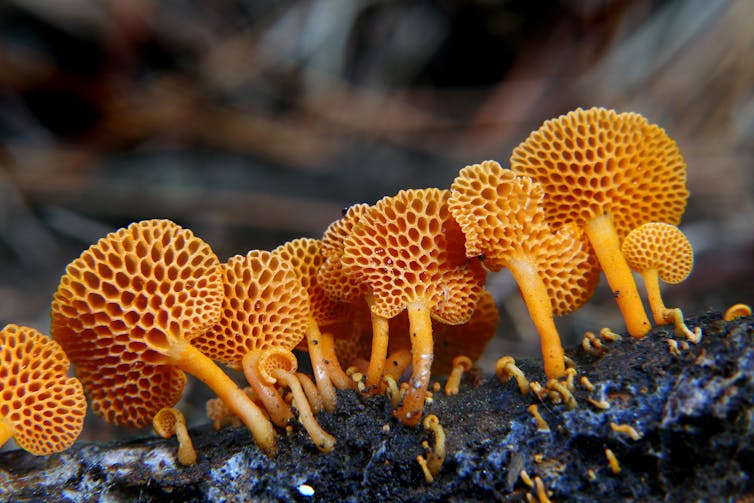
The golden oyster mushrooms’ invasion of North America should serve as a bright yellow warning that nonnative fungi are capable of rapid invasion and should be cultivated with caution, if at all.
Golden oyster mushrooms are now recognized as invasive in Switzerland and can be found in forests in Italy, Hungary, Serbia and Germany. I have been hearing about people attempting to cultivate them around the world, including in Turkey, India, Ecuador, Kenya, Italy and Portugal. It’s possible that golden oyster mushrooms may not be able to establish invasive populations in some regions. Continued research will help us understand the full scope of impacts invasive fungi can have.
What you can do to help
Mushroom growers, businesses and foragers around the world may be asking themselves, “What can we do about it?”
For the time being, I recommend that people consider refraining from using golden oyster mushroom grow kits to prevent any new introductions. For people who make a living selling these mushrooms, consider adding a note that this species is invasive and should be cultivated indoors and not composted.
If you enjoy growing mushrooms at home, try cultivating safe, native species that you have collected in your region.
There is no single right answer. In some places, golden oyster mushrooms are being cultivated as a food source for impoverished communities, for income, or to process agricultural waste and produce food at the same time. Positives like these will have to be considered alongside the mushrooms’ negative impacts when developing management plans or legislation.
In the future, some ideas for solutions could involve sporeless strains of golden oysters for home kits that can’t spread, or a targeted mycovirus that could control the population. Increased awareness about responsible cultivation practices is important, because when invasive species move in and disrupt the native biodiversity, we all stand to lose the beautiful, colorful, weird fungi we see on walks in the forest.
Aishwarya Veerabahu receives funding from UW-Madison Dept. of Botany, the UW Arboretum, the Society of Ecological Restoration, and the Garden Club of America. Aishwarya Veerabahu was an employee of the USDA Forest Service.
Read These Next
Oldest known cremation in Africa poses 9,500-year-old mystery about Stone Age hunter-gatherers
An ancient cremation would have been a community spectacle in a place returned to and reignited over…
West Coast levee failures show growing risks from America’s aging flood defenses
Levees protect more than 7 million buildings in the US today, yet they got a D-plus grade in 2025. A…
Has the Fed fixed the economy yet? And other burning economic questions for 2026
As 2026 begins, uncertainty is at the top of everyone’s mind.






